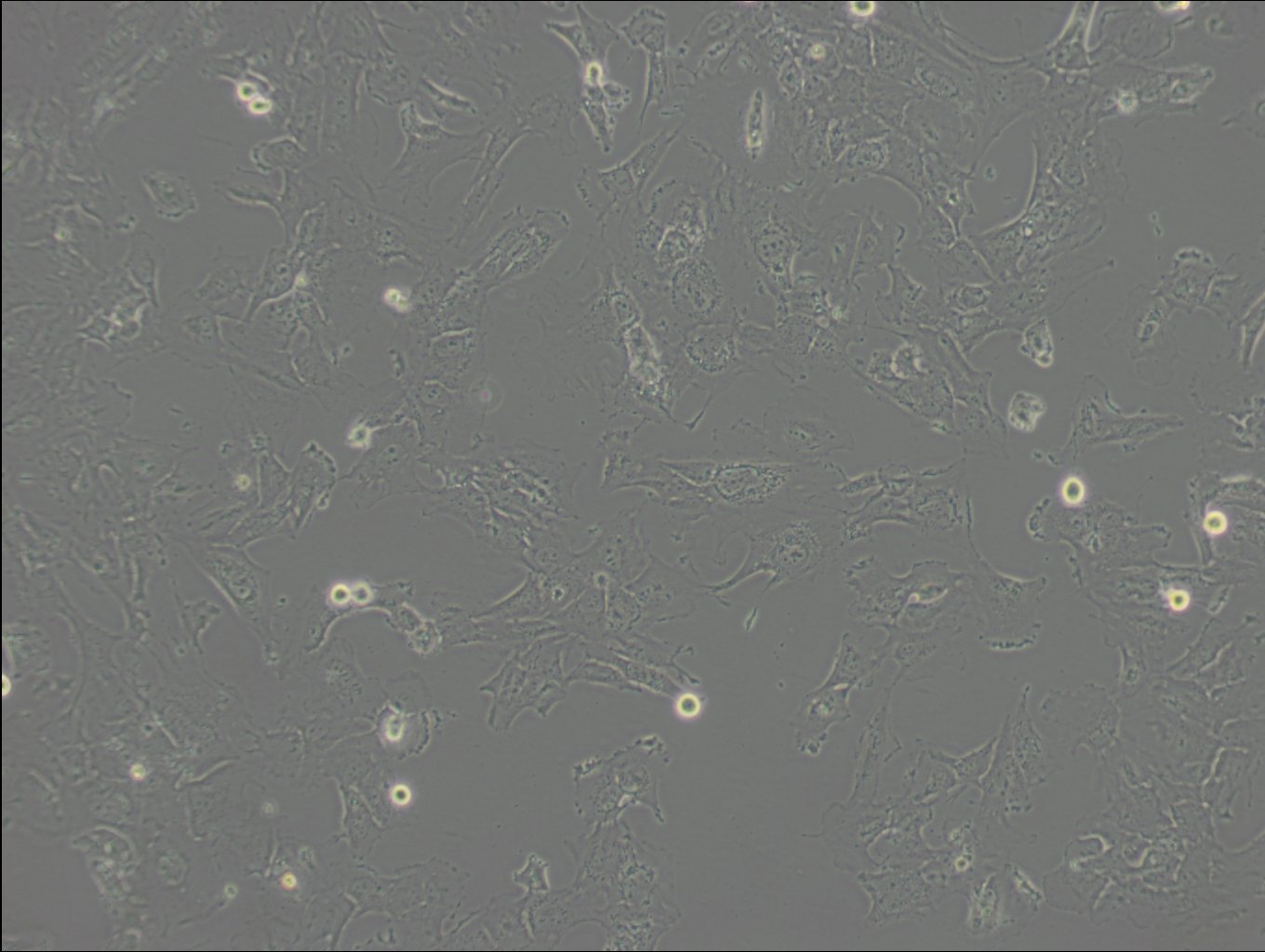Hs 578T Cells
























General information
| Description | The Hs 578T line had a mixed polygonal morphology initially, but a stellate cell type was selected for during passage and by cloning. Aggregates of casein protein granules, desmosomes, tight junctions, lipid droplets and vesicularized smooth endoplasmic reticulum were observed by electron microscopy. As with Hs 578Bst, no estrogen receptors or endogenous viruses were detected. |
|---|---|
| Organism | Human |
| Tissue | Mammary gland, breast |
| Disease | Invasive breast carcinoma |
| Synonyms | HS 578T, Hs-578T, HS-578T, Hs_578t, Hs-578-T, HS-578-T, Hs 578.T, HS578T, Hs578T, Hs578t, HS0578T, 578T, HS578, Hs578, Homo sapiens No. 578, tumor cells |
Characteristics
| Age | 74 years |
|---|---|
| Gender | Female |
| Ethnicity | European |
| Morphology | Epithelial |
| Growth properties | Adherent |
Identifiers / Biosafety / Citation
| Citation | Hs 578T (Cytion catalog number 305089) |
|---|---|
| Biosafety level | 1 |
Expression / Mutation
| Receptors expressed | Receptor expression: estrogen receptor, not expressed |
|---|---|
| Tumorigenic | No |
Handling
| Culture Medium | DMEM, w: 4.5 g/L Glucose, w: 4 mM L-Glutamine, w: 1.5 g/L NaHCO3, w: 1.0 mM Sodium pyruvate (Cytion article number 820300a) |
|---|---|
| Medium supplements | Supplement the medium with 10% FBS, 0.01 mg/ml human insulin |
| Passaging solution | Accutase |
| Subculturing | Remove the old medium from the adherent cells and wash them with PBS that lacks calcium and magnesium. For T25 flasks, use 3-5 ml of PBS, and for T75 flasks, use 5-10 ml. Then, cover the cells completely with Accutase, using 1-2 ml for T25 flasks and 2.5 ml for T75 flasks. Let the cells incubate at room temperature for 8-10 minutes to detach them. After incubation, gently mix the cells with 10 ml of medium to resuspend them, then centrifuge at 300xg for 3 minutes. Discard the supernatant, resuspend the cells in fresh medium, and transfer them into new flasks that already contain fresh medium. |
| Split ratio | 1:2 to 1:4 |
| Fluid renewal | 2 to 3 times per week |
| Freeze medium | CM-1 (Cytion catalog number 800100) or CM-ACF (Cytion catalog number 806100) |
| Handling of cryopreserved cultures |
|
Quality control / Genetic profile / HLA
| Sterility | Mycoplasma contamination is excluded using both PCR-based assays and luminescence-based mycoplasma detection methods. To ensure there is no bacterial, fungal, or yeast contamination, cell cultures are subjected to daily visual inspections. |
|---|---|
| STR profile |
Amelogenin: x,x
CSF1PO: 13
D13S317: 11
D16S539: 12
D5S818: 11
D7S820: 10
TH01: 9,9.3
TPOX: 8
vWA: 17
D3S1358: 16
D21S11: 29,32.2
D18S51: 16
Penta E: 13,14
Penta D: 8,13
D8S1179: 13
FGA: 23,24
D1S1656: 11,16
D6S1043: 12
D2S1338: 17,26
D12S391: 19
D19S433: 14,15
|
